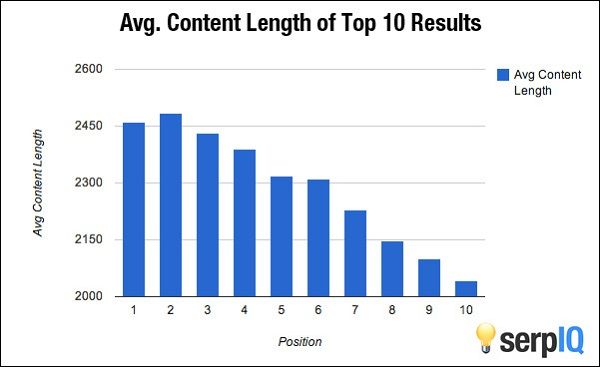Sometimes Google rolls out a major update that rocks the SEO industry. The infamous Panda update was one of them.
This particular update ended the reign of low-quality content that plagued search results for years.
Before the update, searching for something like “weight loss tips” was a drag. The results included keyword-stuffed posts and duplicate articles copied from prominent sources.
Long story short, black hat SEO was rampant, and user experience was a mess. SEOs used article spinning and blog spamming software for higher rankings.

Image credit: Ranjat M – Pixabay
The Google Panda update was designed to work as a filter. It rewarded sites with high-quality content, and aggressively penalized spammy and low-quality pages and posts.
Additionally, it caused the total and final collapse of “private blog networks” or PBNs. These were mass-produced blogs that were all held by one private network. Black hat SEO agencies would build these up, and then publish links to other sites within their own network, thus producing a feedback loop of increased “relevance” in the eyes of search crawlers.
Google's Panda updates weren't about backlinks or security — they were about content quality. Share on XPanda put an end to that once and for all. As you might imagine, this demolished entire black hat SEO “agencies” and brought down countless sites.
How the Panda Update Works
The Panda algorithm assigns a “quality score” to web pages. This is now a major ranking factor and is affected by the following:
1. Search query relevancy
Boost your quality score by making sure your content matches the search query. For example, if you’re trying to rank a page that promotes off-roading vehicles, don’t optimize it for “best affordable city cars.” Even if you were to succeed temporarily, that info would be completely irrelevant to the searcher, and thus you’ll end up getting hurt in the long-term.
Besides a lack of keyword research, a search query mismatch can occur from publishing content that’s too vague. This could include cookie-cutter posts with information that can be found elsewhere.
2. Ad ratio
Having enough unique content on a page is crucial for quality score. Loading up on banner ads, however, may destroy your searchability.
Excessive ads ruin user experience and can also have a negative impact on your site speed. As a result, bounce rates can increase and conversions decrease.
Over the years, sources have determined the ideal ad ratio. Some say ads shouldn’t take up more than 30% of a page. Others say the amount of ads doesn’t matter as long as you have unique content. But what isn’t up for debate is this… if you tip the scales in favor of ads, you will hurt the user experience and Google will likely decrease your quality score.
3. Thin content
If your content isn’t original or useful, Google will often now flag your site for what’s called “thin content”. The name says it all really. This refers to posts that are shallow and have little added value. Examples include doorway pages, automatically curated posts, duplicate content, etc.
To be Panda-ready, your website must have unique and useful content. Share on X4. Word count
Although not confirmed by Google, SEOs notice a correlation between rankings and word count. A study by SerpIQ confirmed this by comparing the average word count of the top 10 results:

Image credit: SerpIQ
Backlinko research actually showed that the average word count of first page results has slightly dropped recently, but don’t dig too deep into that. It’s just something to think about over the next few years. Either way, it’s clear that top-ranking results are usually longer. Panda-friendly content covers topics on a deeper level, provides actionable tips, and is definitively more linkable.
Knee-Jerk Reactions to the Google Panda Update
Despite existing for years, the Panda algorithm is constantly refreshed.
Since Panda is ever-evolving, it’s common for novices and experts alike to either misunderstand it or forget critical details.
One example was the snap-reaction belief that merely removing affected content would help. So-called “penalty experts” swept through entire sites and made lists of content to delete. While it made sense at the time, it caused rankings to sink even deeper.
SEO experts focused too much on quality score and not enough on traffic. Just because an article doesn’t have a high word count, doesn’t mean it should be removed. If it’s getting traffic from Google, it’s probably good enough to rank.
Matt Cutts once confirmed that Panda refreshes on a monthly basis. So you can’t sit on your laurels. One easy way to stay updated is by regularly checking the Google Algorithm Change History on Moz. Doing so will help you make more informed decisions about SEO.
A Few Additional Tips
The truth, is that you’re probably already safe. You most likely know the best practices, even if you didn’t know they came about as a result of Google Panda.
But for good measure, here are a few additional things to consider when looking at your overall site optimization.
Noindex low-quality content
Instead of removing low-quality content entirely, just isolate it by blocking indexation. This will prevent them from dragging down your rankings.
Always add your take
There’s nothing wrong with getting inspiration from others. However, you won’t succeed without unique content. When writing about popular topics, explore new angles and use your own voice.
Focus on authority
Don’t forget that the trust score of your content also needs attention. Obtain backlinks or social media shares from authoritative sources and influencers.
Focus on relevancy
To secure content relevancy, learn how to pick keywords. Integrating long-tail keywords in your strategy is a good start. It helps to meet audience expectations and generates content ideas.
Conclusion
In SEO, separating fact from fiction can be a pain. This is especially true when you’re dealing with complicated issues like those that arise from Google updates.
Hopefully, the tips above can help you in the future. Just remember that content quality is only the tip of the iceberg! There’s still a slew of SEO strategies to discover and apply. Good luck!








